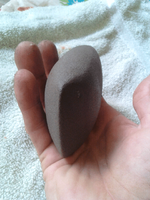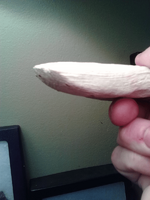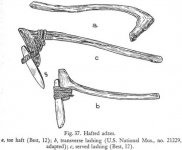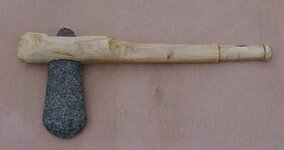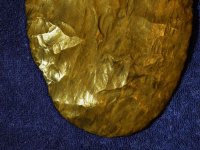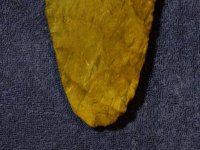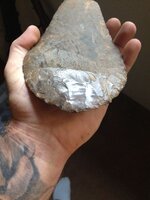Below is a picture of three celts/spaces. Is there a way to determine which one is a celt or a spade.
The flint celt/spade is polished on the end so I am assuming it was a spade, polished by digging. As you can see the other two celts/spades are a similar material but different configuration. One has a relatively flat top and a flared bottom. The other has a much narrower top and a more rounded bottom. It was my understanding that the square top indicated a spade but the bottom certainly looks more axe like. Any opinion?
Also, does the material have anything to do with the period it was made? Based on some preliminary research, it looks like they might be Archaic or Mississippian. I actually have no confidence in my assessment.
I do not know where these pieces actually came from but they are a from a collection that was purchased in
Cherokee, NC in the late 1920's. It is my understanding that they were the made by the Cherokee--not necessarily around Cherokee, NC but the areas they occupied.
Also, any idea as to potential value. It seems these objects can be all over the deck relative to price and I don't know what begins to establish there value beyond grade and size.
Thanks for any info.
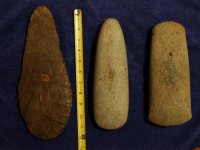
The flint celt/spade is polished on the end so I am assuming it was a spade, polished by digging. As you can see the other two celts/spades are a similar material but different configuration. One has a relatively flat top and a flared bottom. The other has a much narrower top and a more rounded bottom. It was my understanding that the square top indicated a spade but the bottom certainly looks more axe like. Any opinion?
Also, does the material have anything to do with the period it was made? Based on some preliminary research, it looks like they might be Archaic or Mississippian. I actually have no confidence in my assessment.
I do not know where these pieces actually came from but they are a from a collection that was purchased in
Cherokee, NC in the late 1920's. It is my understanding that they were the made by the Cherokee--not necessarily around Cherokee, NC but the areas they occupied.
Also, any idea as to potential value. It seems these objects can be all over the deck relative to price and I don't know what begins to establish there value beyond grade and size.
Thanks for any info.

Upvote
0



